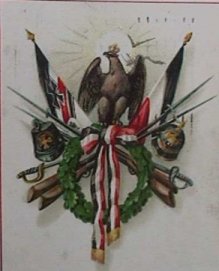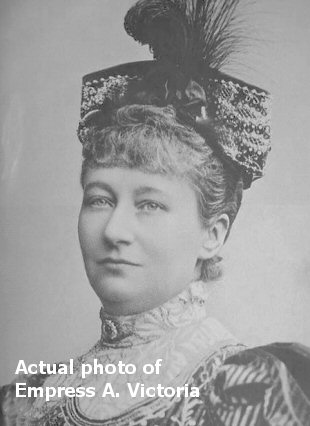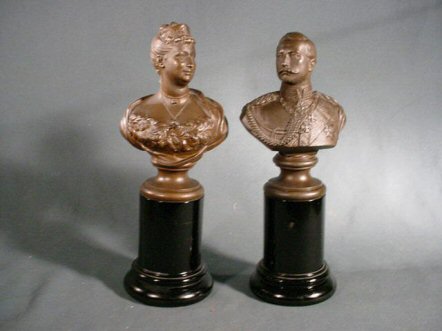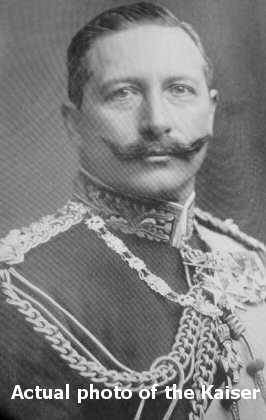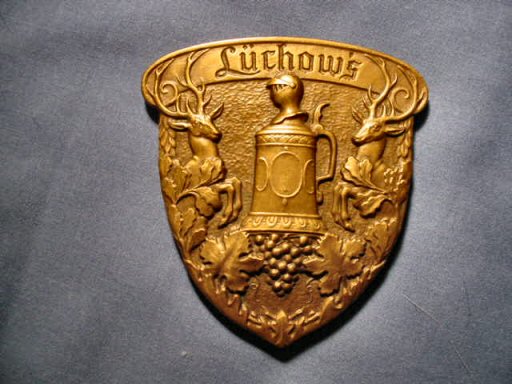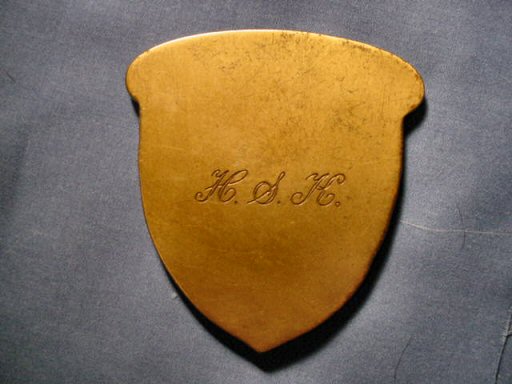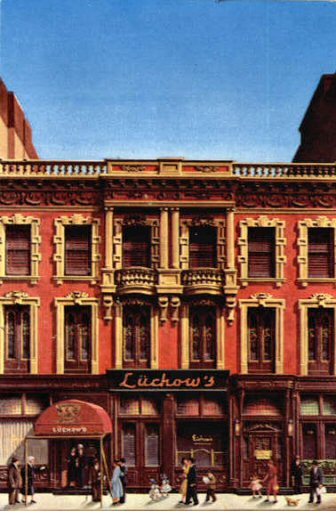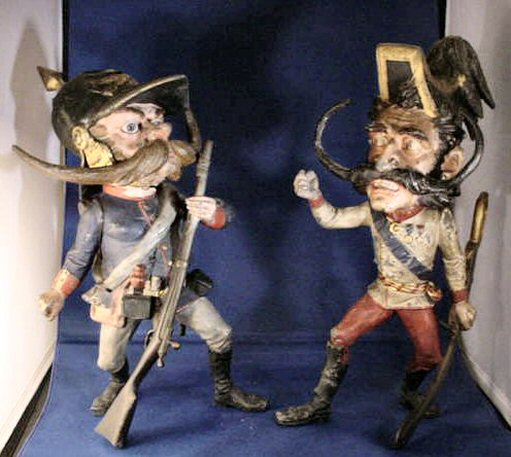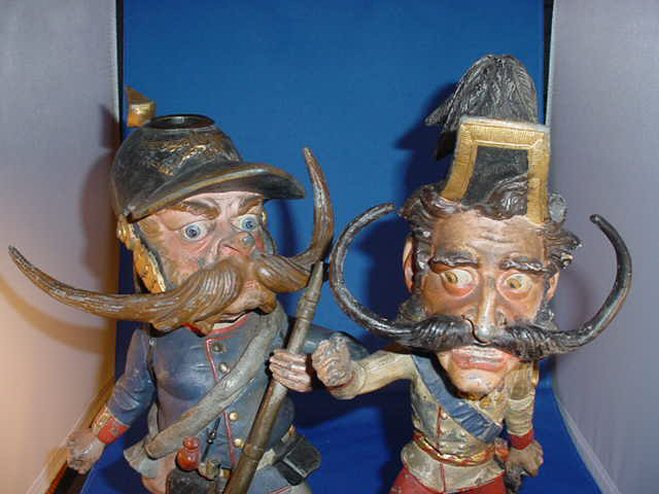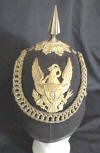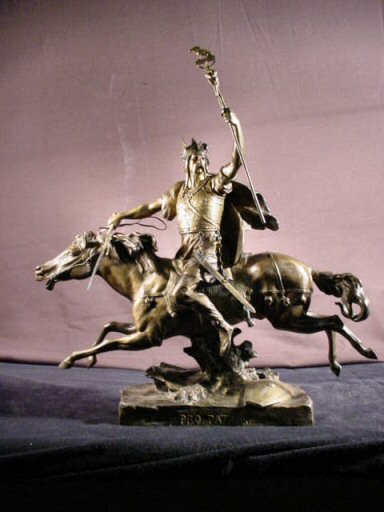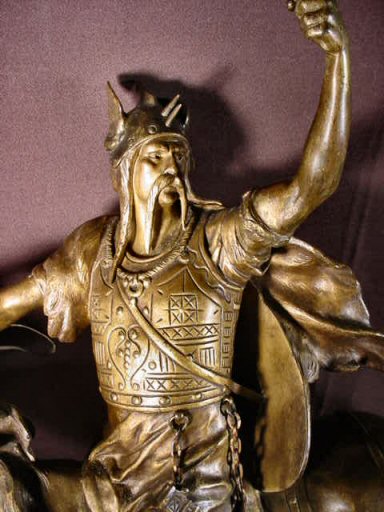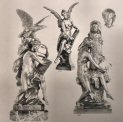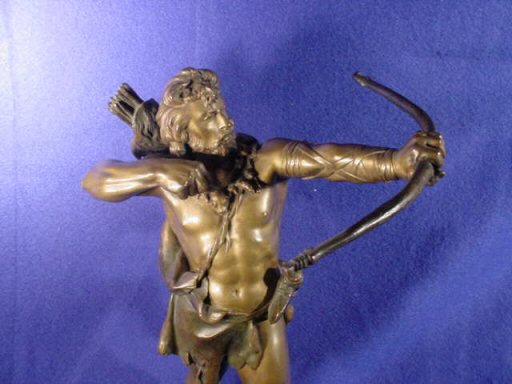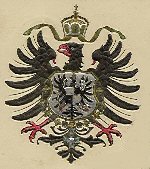|
|
|
|
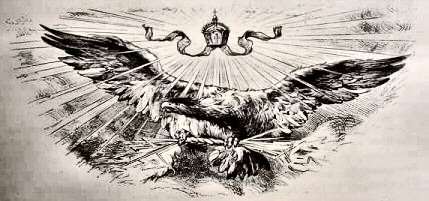

Bronzes and Statuary
Page 3
Please be sure to visit our Kaiser Wilhelm II collection.
Also, take a look at our Frederick the Great gallery.
| |||||||||||||
|
Matching Busts of the Kaiser and Kaiseren (Item KSTATUE 3-4; WILHELM 5-2) |
|||||||||||||
| DESCRIPTION: Here in quiet splendor are the official busts of Kaiser Wilhelm II and his beloved wife, Kaiseren Augusta Victoria. These are very artistically accomplished in the art form of the late 19th century. They are crafted in spalta, or white metal. The one of the Kaiser is signed by Uhlmann, who undoubtedly is the artist on the Kaiseren as well. They measure about 12 inches high to include 4 ½-inch bases. The details of the emperor’s medals and uniform are spectacular. The Order of the Prussian Black Eagle especially stands out. The jewels of the Kaiseren and the wonderful floral bodice are wonderfully eloquent, as well. Here are a pair of absolutely wonderful images of the Royal Hohenzollern family. The condition is great throughout and to find a matching pair of these great historically important items together is very, very rare.
PRICE: SOLD |
|
||||||||||||||||||
|
Pair of Landsknecht Statues (Item KSTATUE 3-5; LAND 1-4) |
||||||||||||||||||
| DESCRIPTION: Here is the ultimate Landsknecht collectibles; a pair of statues in vibrant dramatic pose. they are undoubtedly from the late 19th century; possibly 1870’s during the height of Germanic victories and military pride in that present time and the past. The Landsknecht were practically exalted in patriotic German lore (see our explanation in the foreword of the Landsknecht page). These statues are constructed in German Weissmetal (white metal), otherwise know as spelter. The sculptures are large, about 20 ¼ inches tall with the bases being about 12 ½ by 9 ½ inches. The costuming is typical Landsknecht with the ultra-flamboyant cap with feathers, the gaudy trousers with the slashing patterns, and the tunic with bloused sleeves. They wear the traditional dagger and wield the Zweihandler (the great sword). At the feet of one of the figures is a Standarte that looks like it identifies the swordsman as being from the Saxon Landsknechte. Underneath this is the royal-eagle motif with oak-leaf trim. The other soldier is standing on a standard that looks to be the royal lion of Bavaria. Gorgeous scroll-like decoration springs up also on the base. On one figure the crossbow of the times is depicted. Both figures have the short sword or dagger at their side known as the Katzlaber, or cat ripper. Fine and accurate in every single detail, they are mounted on wooden bases. They are so vividly real looking that the observer will feel that he hears them saying: “Hut-Dich-Baur Ich Komm,” “Look out. Here I come!” One can also contemplate the effect that these colorful displays in garb may have had on the foe when they also heard that fearful chant resounding over the field of battle. Pay was always the important consideration for these men. More than one general anguishing from declining funds would suffer the ultimatum of “No pay-no Landsknechts.” To this end the mercenaries were always given the right to loot any town which they had captured; all except for the church bells, which were reserved for the master gunner for melting down to cast cannon barrels. Originally, the Landsknecht were raised in companies (Fähnlein) of 400 men commanded by a captain appointed by the Oberst colonel. From an early stage these freebooters were guaranteed by the Imperial Diet a great freedom in the way they dressed. This freedom was supposed to give the men a little happiness and pride in their lives which was so full of danger. So, the almost outrageous dress had its use and we see it reflected in these two wonderful artistic depictions in metal that we proudly present here and now.
PRICE: SOLD |
| |||
|
Bronze Plaque from the most Famous and Oldest German Restaurant (Item KSTATUE 3-7) |
|||
| DESCRIPTION: For the true Germanophile, here is a heavy, bronze plaque that was used at a special table placement for a particular favored customer. It probably dates in the 1880s. On the back it has the initials “H.S.K.” for the VIP that would sit at that position at the formal dining table as an honored guest of the management. The plaque is heavy and measures 3 x 2 3/4 inches at the widest point. August Lüchow constructed a building on 110 to 112 East 14th Street in 1840. From 1882 to 1982, Lüchow’s restaurant survived. It closed in 1982 and the building was demolished after a suspicious fire gutted it in 1992. New York University bought the property. 110 East 14th Street now houses some 600 students and includes a dining hall/exercise facility and a small courtyard with only a wood model providing testament to the grandeur that was once part Lüchow’s Restaurant. This is a very nice German-American early memento.
PRICE: $145.00 |
| ||||||||||||||||||||||||||
|
Franco-Prussian War Caricatures Candlesticks (Item KSTATUE 3-8) |
||||||||||||||||||||||||||
| DESCRIPTION: Here is a tremendous pair of caricatures of a Prussian and a French solder seemingly locked in combat over their disagreements over the issues of the Franco-Prussian War, July 19, 1870-May 10, 1871. The conflict marked the culmination of tensions between the two powers following Prussia’s rise to dominance in Germany. The war was declared by France on Prussia. Well, for whatever reasons, these two combatants reflect every bit of contempt and avarice that is possible to summon up (in comic caricature). We have had a heck of a time keeping them apart to preserve the peace and tranquility that usually tends our stockroom. The pieces are truly incredible in that they were most probably sculpted and cast in the aftermath of or perhaps even during the war. They are certainly 1870-style pieces. The fact that they are still perfect today (unbroken in any way) and the fact that the paint is practically intact and bright is incredible, to say the least. They are 136 years old and still looking great. The comic physiognomy and facial features are superb. The expressions depicted are classic. The regimental assurance and stoic demeanor of the Prussian character betray his confidence in his mission for der Vaterland, even though he still is wary of the prowess of his opponent. The French counterpart is obviously very anger and frustrated. His seething vexation is apparent in his appearance and his perceivable warlike gestures. Win or lose, he means business. The Prussian will only accept victory? Such caricatures of the 19th century are highly sought after today, and I feel that these are some of the best I have ever seen for condition, subject matter, and rarity. They are about a foot high. The artist did know something about the uniforms and equipment of the times. The Mauser 11-mm rifle is quite accurate as is the French sword. The eagle on the Prussian helmet looks more like an American one, however, and I find this very interesting because we know that just after Prussia’s resounding victory over France the U.S. decided to pattern its dress helmets after the Prussian spike helmet (very, very close). The eagle, I suppose, might suggest that the figures are American made??? I don’t believe that another set of these can ever be found, let alone in this immaculate condition.
PRICE: SOLD |
| |||||||||||||||||||||||||||
|
Magnificent Bronze Statue of Germanic Warrior in Victory Passion (Item KSTATUE 3-10; ART 13-3; OLD 5-6) |
|||||||||||||||||||||||||||
| DESCRIPTION: In his hand held high is the captured standard of the First Legione Italica, the elite army of Rome. This legion had its permanent bases in Lugdunum, Gaul (Lyon, France) and in 11. 69 5th century AD at Novae (near Svistov, Bulgaria). In the 190s AD this army group built the fortifications along the Danube. The illustrious 10th Legion also used the boar for it emblem; mostly as an insult to the Hebrews in the cities of the Roman occupation; its being a direct affront to the custom and religion of Israelites. Throughout Roman military history there were a thousand conflicts with the Germanic tribes and the legions of the Roman emperors. The most important of these being the battle of the Teutoburgerwald when Publius Quinctilius Varus marched forward with three Roman legions to cross the Rhine to conquer the Germanic lands. He was met by Germanic tribesmen led by the warrior Arminius, (or Hermann, in German) the leader of Cherusci. Three Roman legions were totally wiped out. The outcome of the battle established the river Rhine as the boundary of the Roman Empire for the next few hundred years until the decline of the Roman influence in the west. The Roman Empire was never able to conquer GERMANIA, although many attempts were made. The tribes that Hermann was able to assemble for the fight were finally allied after centuries of warfare against each other. They were the Cherusci, Marsi, Chatti, and Bructen. They saw with Hermann’s convincing that they needed to come together finally to oppose a great, dangerous enemy. Varus never expected to be met with a now-united army of Germans. To see more about this, the most important battle ever fought from the German concept, go the Google and search Teutoburger Forest Battle and our site at Items OLD 4-7 and 4-8 and Item OLD 3-2. This magnificent bronze sculpture dramatically depicts a Germanic warrior in full regalia on horseback. He holds aloft the captured standard of either the first or 10th legion that has been defeated (note the boar symbol). On the ground below the galloping hoofs are the shield of the legionnaires and another fallen standard of another legion defeated at whatever battle this might represent. The warrior is clothed in the typical garb of the Teutonic tribes with the winged helmet so popular among the Cherusci and the Goths. The sword in his right hand is the very typical one used by the Germanic hordes. The bronze is by a French artist: These Teutonic or Gaulic statues usually are. It’s signed by E. Picault and has a stamping in a circle that says “Vrai Bronze.” Emile Louis Picault worked from 1860-1915. He had a 50-year career. He worked tirelessly producing approximately 1,000 exciting sculptures. His choice of subject was predominantly heroic men of action. Many extraordinary plaques and medallions have survived, while only a handful of busts exists. Among his repeated themes were memorial monuments, famous personages, blacksmiths, warriors, knights, and musicians. These were often accompanied by inspiring inscriptions drawn from the Latin language. He is recognized as one of the greatest bronze sculptors of Europe in the 19th century. This bronze of the victorious Teutonic warrior is a classic example of his magnificent work. We show a few of his other sculptures from the four-volume set Bronzes, Sculptors, Founders 1800-193 by Harold Berman. In this bronze both man and horse are in the finest detail. It is most dramatic indeed. The accuracy of the equipment is phenomenal: the sword, the shield, the helmet, the scabbard are just historically correct in every way. The horse is especially great. The sun symbols on the horse blanket and the man’s vest indicate sun-worshipping tribal faith. The base contains the words in Latin Pro Patria that translates to “For Fatherland.” This is appropriate because of the subject portrayed. This is an exciting sculpture in wonderful condition. It’s historically important and a great collector’s item for a faithful Germanophile.
PRICE: SOLD |
|
||||||||||||||||
|
Bronze Sculpture of Teutonic Hunter (Item KSTATUE 3-11; HUNT 7-6; ART 13-5, BRONZEMET 2-4) |
||||||||||||||||
| DESCRIPTION: We have seen larger bronzes; we have seen bronzes by famous sculptors; we have seen bronzes that in themselves are famous; but, we have in all our years never seen a better bronze sculpture than this one. The artist who created this one was a master beyond comparison; an archeologist (at least in theory), and with a fantastic knowledge of human anatomy. Nothing touches this piece for sheer lifelike quality throughout. The statue is a depiction of an ancient Germanic warrior in the stance of hunting with bow and arrows. Every vein, every muscle tenses as he loosens the arrow at the game he hunts. He stands upon a rock formation that is also ultra-realistic. He wears animal-skin garments with an animal-skull necklace that adorns his chest. He has a sinew-wrapped stone-head ax at his waist. The quiver on his back and the bow are so realistic as to make the viewer sure that he has just seen the arrow in flight. The Aryan face and typical top-knot hairstyle is Teutonic in every way. These were the warriors that defeated three Roman legions at the Teutobergerwald battle under the leadership of Hermann, the Churisi, in the year 9 AD. We cannot say enough about this magnificent sculpture. It is in pure bronze with a great patina. It stands about 14 inches high and is signed by Henry Weisse. Note: it has always been said that when an artist can portray hands, “he has arrived.” Hands are more difficult in paintings and sculpture than a face. Even more difficult are feet. Look at the images of the feet to comprehend the excellence of Weisse’s work. We have included with the overall pictures a group of detailed images that should be studied closely. You are in my opinion looking at one of the finest bronzes to ever come out of the Deutsches fatherland. We don’t know when Mr. Weisse worked, but the piece was typical of the romantic bronzes of the mid 19th century. However, the theme of the noble Germanic warrior was foremost in the mythos of the NSDAP (Nazi Party) and it could be as late as that period. It is a true treasure and an important art masterpiece indeed. This is for the ultimate connoisseur of realism, he that would reject the garbage called “modern art” as so much Dreck and Kitsch.
PRICE: $9,850.00; should be much more |
Page Three |
|
|
|
Please refer to item designator in parentheses in all correspondence.
Please E-mail for any additional information you may need.If you prefer, contact 'Germania' at PO Box 68, Lakemont, GA 30552
or call at 706.782.1668.
Please! do not call during the wee hours of the morning. The best time for calling us is between 10am and 12 noon and between 9 and 11 pm eastern time.


